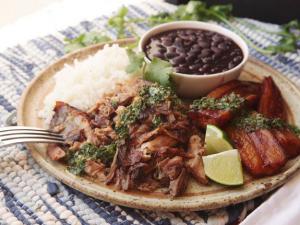Miriam Chesner explores Latin American cuisine
New Jersey's Miriam Chesner delves into Latin America's distinctly varied cuisine.
MORRIS PLAINS, NEW JERSEY , USA, November 21, 2018 /EINPresswire.com/ -- Inspired by Native American, African, European, and Asian influences, Latin American cuisine is as varied as it is delicious, according to Miriam Chesner, a New York University graduate and cultural expert, as she explores food, beverages, and cooking styles common to much of Latin America.Famed for its many maize-based dishes, Latin America is also home to some of the world's most recognizable and well-loved salsas and condiments. "The cereal grain maize is extremely prevalent in Latin America and is used in dishes such as tacos, tamales, and tortillas, as well as arepas and pupusas, all of which are instantly recognizable as regional Latin American dishes," reveals Chesner.
"The same can be said for Latin America's salsas and other condiments," she continues, "including guacamole and pico de gallo, along with chimichurri, aji, and pebre."
According to Chesner, who's a cultural expert and teacher of English as a second language, coffee is among Latin America's most popular and most widely consumed beverages. "Other popular drink options across Latin American—some of which date back to the times of the Native Americans—include hibiscus tea, atole, horchata, chicha, and aguas frescas," she adds.
"Popular desserts, meanwhile," the New Jersey native continues, "include staples such as rice pudding and flan, as well as more region-specific desserts such as dulce de leche, alfajor, and tres leches cake, all of which are particularly sweet in taste – a common signature of Latin American dessert dishes."
Of Latin America's primary culinary influences, Chesner goes on to explain that Native American inspired cuisine remains perhaps the most prevalent. "Cornbread and dishes such as arepas, humitas, papa a la huancaina, chipa guasu, and locro all have their roots in Native American cooking, thanks to abundant crops of corn, beans, and potatoes across Central and South America," she reveals. Today, these and similar dishes remain particularly common in countries such as Bolivia, Colombia, Ecuador, Paraguay, and Peru.
African influences on Latin American cuisine saw a heavier focus on meat, often highly seasoned and cooked using traditional African methods.
In contrast, ongoing influences from European countries saw a renewed focus on fruits and vegetables. "Much of the European influence on Latin American cuisine comes from Spain," Chesner points out. Portuguese and Italian influences are also evident, as are influences from France. "Furthermore," she says, "in countries such as Argentina and Uruguay, British, Russian, German, Armenian, and Israeli influences may also be found."
Lastly, Miriam Chesner touches on Asian influences. "Asian spices and cooking styles were readily accepted into Latin American cuisine," she reveals, with fusion dishes apparently proving incredibly popular. "This is particularly evident in dishes such as Peru's chifa, a combination of Cantonese and Peruvian ingredients and traditional cooking methods," she adds, wrapping up.
Chris Hinman
Web Presence, LLC
+1 7578803579
email us here
Legal Disclaimer:
EIN Presswire provides this news content "as is" without warranty of any kind. We do not accept any responsibility or liability for the accuracy, content, images, videos, licenses, completeness, legality, or reliability of the information contained in this article. If you have any complaints or copyright issues related to this article, kindly contact the author above.

